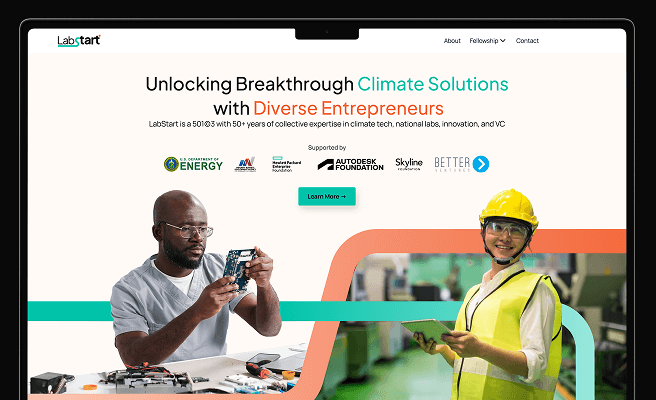High-Fidelity Design
<p>High-fidelity design refers to a detailed and realistic representation of a product's final design. Unlike low-fidelity prototypes, which are basic and often lack detail, high-fidelity designs include intricate visuals, interactive elements, and closely mimic the final user experience. This stage is crucial for stakeholder buy-in, usability testing, and ensuring that the final product aligns with initial visions and requirements.</p>
<p>Historically, high-fidelity designs gained prominence with the advent of advanced design tools and the growing need for precise and accurate prototypes in product development. In industries like climate tech, where user interaction and functionality are paramount, high-fidelity design ensures that products are both user-friendly and effective in their purpose.</p>
<h2>Components of High-Fidelity Design</h2>
<p>High-fidelity designs encompass several key components:</p>
<ul>
<li><strong>Visuals:</strong> Detailed graphics, typography, and color schemes that closely resemble the final product. Tools like <a href="https://www.sketch.com/" style="color: #2896FF; text-decoration: underline;">Sketch</a> and <a href="https://www.adobe.com/products/xd.html" style="color: #2896FF; text-decoration: underline;">Adobe XD</a> allow designers to craft intricate visuals.</li>
<li><strong>Interactivity:</strong> Clickable elements and realistic user interactions to simulate the actual user experience. This is often achieved using prototyping tools such as <a href="https://www.figma.com/" style="color: #2896FF; text-decoration: underline;">Figma</a> or <a href="https://www.invisionapp.com/" style="color: #2896FF; text-decoration: underline;">InVision</a>.</li>
<li><strong>Content:</strong> Real or closely simulated content, including text, images, and multimedia elements. This ensures that the design is not only visually accurate but also contextually relevant.</li>
</ul>
<h2>Importance of High-Fidelity Design in Product Development</h2>
<p>High-fidelity design is integral to the product development process for several reasons:</p>
<p><strong>Stakeholder Approval:</strong> Detailed designs help stakeholders visualize the final product, facilitating feedback and approval processes. For instance, in climate tech projects focused on carbon capture, presenting a high-fidelity design can help illustrate the user interface of monitoring tools.</p>
<p><strong>Usability Testing:</strong> High-fidelity prototypes allow for thorough usability testing, identifying potential issues before the development phase. For example, a high-fidelity design of a green manufacturing dashboard can reveal usability flaws that need addressing.</p>
<p><strong>Development Blueprint:</strong> These designs serve as blueprints for developers, ensuring that the final product closely matches the intended design.</p>
<h2>Challenges and Solutions in High-Fidelity Design</h2>
<p>While high-fidelity designs are beneficial, they come with challenges:</p>
<p><strong>Time-Consuming:</strong> Creating detailed designs can be time-intensive. Solution: Utilizing efficient design tools and streamlined workflows can mitigate this. Tools like <a href="https://www.sketch.com/" style="color: #2896FF; text-decoration: underline;">Sketch</a> and <a href="https://www.adobe.com/products/xd.html" style="color: #2896FF; text-decoration: underline;">Adobe XD</a> offer features that enhance productivity.</p>
<p><strong>Resource-Intensive:</strong> High-fidelity design requires significant resources. Solution: Fractional services or on-demand experts can provide the necessary skills without the need for full-time hires, especially beneficial for startups and small teams.</p>
<h3>Case Study: High-Fidelity Design in Climate Tech</h3>
<p>An example of high-fidelity design in climate tech is the development of a user interface for a carbon footprint tracking app. The design team used <a href="https://www.figma.com/" style="color: #2896FF; text-decoration: underline;">Figma</a> to create interactive prototypes that accurately represented the final product. This approach allowed for thorough usability testing and stakeholder feedback, ensuring the app was user-friendly and met sustainability goals.</p>
<h2>Conclusion</h2>
<p>High-fidelity design plays a critical role in the product development lifecycle, bridging the gap between conceptual ideas and final products. By offering detailed, interactive, and realistic prototypes, it facilitates stakeholder buy-in, enhances usability testing, and provides a clear blueprint for developers. For sectors like climate tech, high-fidelity design is instrumental in creating effective, user-centric solutions that drive both innovation and sustainability.</p>
<p>Learn more about improving your high-fidelity design strategies and how they can benefit your product development process.</p> <p>If you’re looking for inspiration to elevate customer and user experience, view our work with <a href="https://www.whatifdesign.co/work/vested-futures-ux-design-and-product-strategy" style="color:#2896FF; text-decoration:underline;">Vested Futures</a>, a web platform for climate and ESG vendors and service-provider ecosystem.<p>Ready to get started? <a href="https://cal.com/akhilak/what-if-design?duration=30" style="color:#2896FF; text-decoration:underline;">Book a 1:1 consultation call</a> with us today.</p></p>

Let's scale your impact with great design.
Free consultation, no sales pitch
Thank you! Your submission has been received!
Oops! Something went wrong while submitting the form.
Let’s talk
Nothing great is built alone.
Let’s connect about your vision, our work and how we can collaborate.
Get in touch

